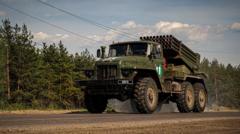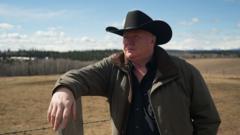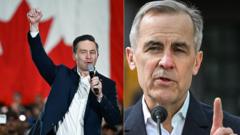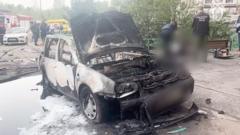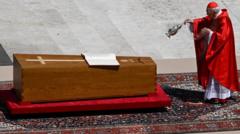In a bold declaration, Russia's top military commander Valery Gerasimov stated that the entirety of the Kursk region is now under Russian control, a statement that Ukraine has firmly denied. This assertion was made during a video conference with President Vladimir Putin, where Gerasimov noted the recapture of the last village previously held by Ukrainian soldiers. As hostilities continue, Gerasimov also commended North Korean troops for their involvement in the conflict, marking the first official acknowledgment of their presence by Russia.
Russia Claims Full Control Over Kursk Region Amid Continuing Ukrainian Operations
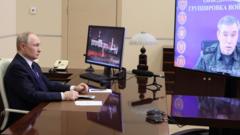
Russia Claims Full Control Over Kursk Region Amid Continuing Ukrainian Operations
Russia's military assertion about regaining control over the Kursk region is contested by Ukraine, intensifying tensions in the ongoing conflict.
Contrary to Russia's claims, Ukraine has insisted that its forces still operate within the Kursk area. In response to the Russian statements, the Ukrainian military characterized them as "propaganda tricks," emphasizing that they continue to hold strategic positions amid ongoing attacks from 70,000 Russian troops. The U.S.-based Institute for the Study of War has reported on Russian advancements in the border region, suggesting escalated efforts to displace Ukrainian forces.
During a conversation with Putin, Gerasimov asserted that over 76,000 Ukrainian soldiers have lost their lives or been injured in the region, a figure that remains unverified. He claimed that Ukraine's military endeavors in Kursk had utterly failed, paving the way for Russian advancements elsewhere. Reports of fighting have continued in surrounding areas, further complicating the situation.
While Ukrainian forces face significant pressure, they are reportedly still active in the adjoining Belgorod region, a situation that reflects their ongoing resistance. The conflict, which escalated significantly following Russia's full-scale invasion in 2022, remains a high-stakes geopolitical issue, with ongoing discussions about potential negotiations for peace. Recent diplomatic interactions, including a meeting between U.S. President Donald Trump and Ukrainian President Volodymyr Zelensky, underscored the complexities of securing a ceasefire agreement amid battlefield developments.
As the situation evolves, both military and diplomatic fronts are at play, highlighting the intricate dynamics of the war in Ukraine and the potential repercussions on future peace negotiations.
During a conversation with Putin, Gerasimov asserted that over 76,000 Ukrainian soldiers have lost their lives or been injured in the region, a figure that remains unverified. He claimed that Ukraine's military endeavors in Kursk had utterly failed, paving the way for Russian advancements elsewhere. Reports of fighting have continued in surrounding areas, further complicating the situation.
While Ukrainian forces face significant pressure, they are reportedly still active in the adjoining Belgorod region, a situation that reflects their ongoing resistance. The conflict, which escalated significantly following Russia's full-scale invasion in 2022, remains a high-stakes geopolitical issue, with ongoing discussions about potential negotiations for peace. Recent diplomatic interactions, including a meeting between U.S. President Donald Trump and Ukrainian President Volodymyr Zelensky, underscored the complexities of securing a ceasefire agreement amid battlefield developments.
As the situation evolves, both military and diplomatic fronts are at play, highlighting the intricate dynamics of the war in Ukraine and the potential repercussions on future peace negotiations.

